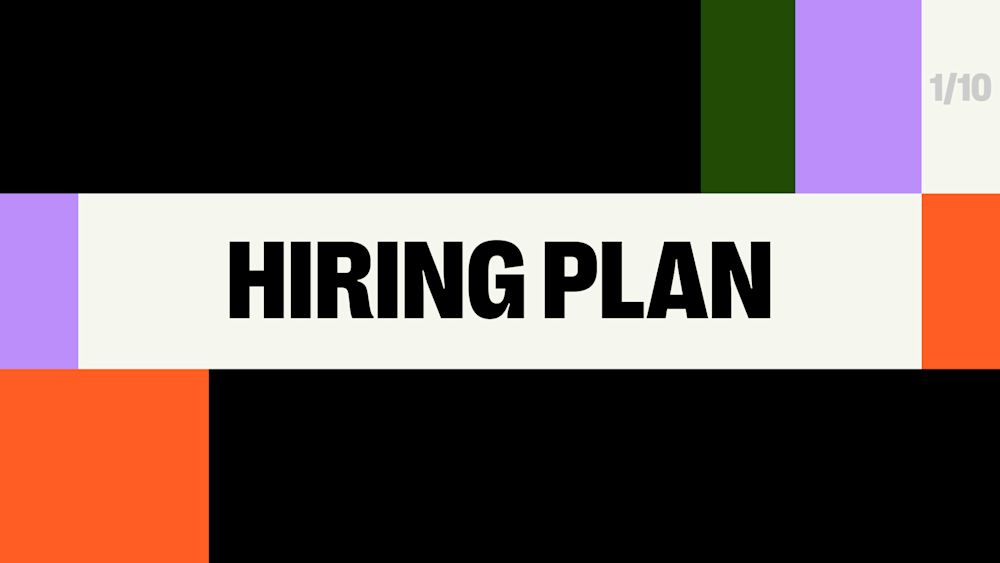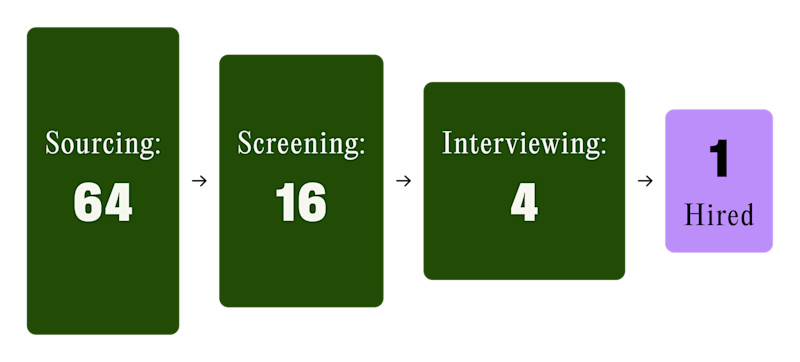How Do You Plan for Recruitment and Hiring?
Table of contents
Whether you’re a small team or a big org, hiring great talent requires a great plan. To develop a great plan, you have to understand your company's business goals and objectives to connect them with your recruitment needs. When you know your needs, it’s easier to define a hiring plan that ensures an effective and fair hiring process.

In this guide, you’ll find examples of ways to succeed with your future hiring.
We’ll cover:
- How do you identify your recruitment needs?
- Defining your hiring plan
- Keeping your hiring plan agile
Let’s dive in.
How do you identify your recruitment needs?
Who do you need to hire — and when? When you're about to set up a recruitment plan, the first thing to do is to figure out your recruitment needs. A great starting point for this is to understand where you're at right now, where you want to be in the future, and, most importantly, what you need to get there.
Many orgs sit down once a year and plan for their recruitment. One of the most efficient ways to identify your recruitment needs is to think about them in relation to your business goals and budget. The following questions can be helpful to connect the two:
- What goals does your company have for the coming year?
- Do you have enough resources to reach these goals?
- Are there any initiatives in the pipeline that require more employees?
- When do you need your new employees up to speed?
- What is your budget for recruiting and hiring?
Note: Recruitment is an ongoing process that hiring is part of. You can read more about recruitment, hiring, and their differences here.
Hiring plan — how to define yours
You now have a clear view of your recruitment needs. The next step is to plan for the hiring process. The purpose of breaking down your recruitment plan into a hiring plan is to set up a strategy that allows you to focus on an effective and fair hiring process.
A hiring plan often includes the steps of sourcing, screening, interviewing, evaluating, and hiring new employees. We will cover these steps more in-depth later on in our 10-step recruitment guide. For now, the important thing is to understand the overall plan of the hiring process — and how to make it as efficient as possible.
Note: Showing candidates how they fit into your org has never been more important. Want to stand out in the crowd? Set up your company page and let The Org help you attract great talent.
Divide by 4
Your org needs to define a hiring plan — but where to begin? One formula you can use as a guideline is the “divide by 4” method.
Originally used by software engineer and business executive Erik Feng, this method helped him to effectively hire outstanding talent for Hulu (part of the Walt Disney concern) back in 2007. The team he hired played an essential role in Hulu's goal to become one of the biggest online video sites. And the formula is easy. As you move through the steps of sourcing, screening, interviewing, and hiring, you simply divide the number of candidates in your pool by 4.

Suppose, for example, that you’re about to fill one single role. You start by finding a diverse pool of 64 quality candidates you'd like to evaluate. You then move on with 16 candidates to screening. From there, you interview and deeper evaluate 4 candidates. And lastly, 4 should become 1 — the person to whom you offer the job.
TL;DR: Work backwards from 4 deep interviews. 16 screenings. 64 quality candidates.
Why would this help your hiring plan? Structure and frameworks are always a great starting point.
The “divide by 4” method is a guideline, and the conversion rates will be particular to your company and the type of role you’re looking to fill. But by following this method, you'll be able to better estimate the time needed for each step of the process. With the numbers in front of you, it’s easier to build your initial plan with a realistic overview.
For example, you can further break down the steps by asking questions about each step and the full process:
- How much time and how many resources can you set aside to ensure you have a diverse pool of 64 quality candidates?
- How long will it take to prepare, execute, and wrap up 4 in-depth interviews?
- What tools and resources do you need to evaluate each candidate equally throughout the hiring process?
- What do you need to feel confident in moving forward with the selected candidates to the following step in the hiring process?
Keep your hiring plan agile
You don’t know how your hiring process will go until you're in the middle of it. No matter how great and detailed your plan is, there will be situations where you'll have to adjust or change parts of it — so remember to keep your hiring plan agile.
Let’s imagine you plan to move on with four candidates to interview, but realize there are seven top candidates in your pool worth a deeper evaluation. Do you have the time and budget to proceed with an additional three candidates for the interview process? With a solid hiring plan, it’s easy to calculate both time and costs for moving on with more candidates in the interviewing process.
You could, for example, find yourself in a situation where you get many more candidates than expected, leading to a longer screening process. Or the other way around: you might have to actively search for candidates to screen, which requires more resources from your hiring team. With an agile hiring plan, you’ll have considered these scenarios in advance, making it easier to make adjustments on the go.
Key takeaways
The key takeaways from the first step of the recruitment process are to understand your recruitment needs and break them down into a hiring plan that is easy to follow.
Your recruitment plan should connect your business goals and objectives with your recruitment needs. Your hiring plan should function as a framework and a structure which help you ensure an effective and fair hiring process.
Ready to put your plan into action? Great. Let’s move on to the next topic in our 10-step guide: how to write job requirements to attract the best talent.


The ORG helps
you hire great
candidates
Free to use – try today
Featured in